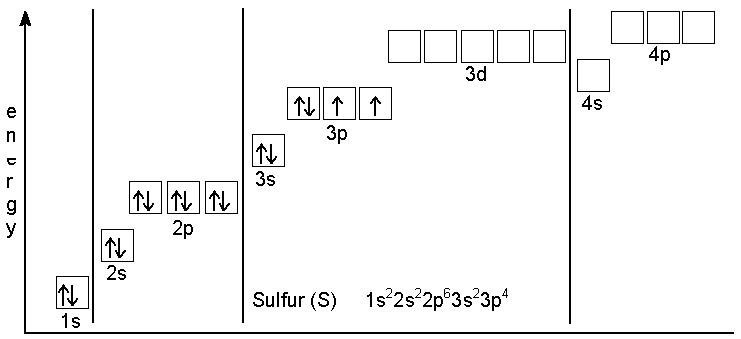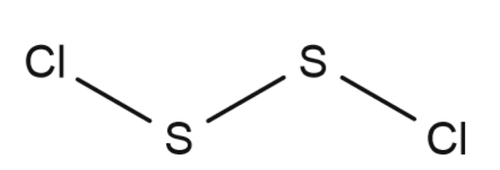
When sulphur monochloride is saturated with chlorine, the compound formed is
A)
B)
C)
D)
Answer
129.3k+ views
Hint: Sulphur has 2 free electrons in the outermost subshell to get covalent bonding in ground state and in an excited state it has 6 electrons free in its last shell. So, in less or saturated amount of chlorine sulphur be in ground state.
Complete step by step solution:
Now formula of sulphur monochloride is
And electronic configuration of

There are two atoms in last
Electronic configuration of chlorine is
So, the reaction be like-
Then in the excess or in saturated quantity of chlorine gas it gives sulphur dioxide as a product.
Hence Option (C) is correct.
Additional Information:
Disulfur dichloride is the inorganic compound of sulfur and chlorine with the formula

There is a covalent bond between sulphur and sulphur to complete inertness of its outer shell.
It is produced by partial chlorination of elemental sulfur. The reaction proceeds at usable rates at room temperature. In the laboratory, chlorine gas is led into a flask containing elemental sulfur. As disulfur dichloride is formed, the contents become a golden yellow liquid:
Note: It gives different reactions when chlorine is not present in sufficient amounts. So the saturated word in question decides many factors in which direction the reaction goes. It also depends on the stability of the final product. Also, temperature during reaction also plays a major factor on the final product.
Complete step by step solution:
Now formula of sulphur monochloride is
And electronic configuration of

There are two atoms in last
Electronic configuration of chlorine is
So, the reaction be like-
Then in the excess or in saturated quantity of chlorine gas it gives sulphur dioxide as a product.
Hence Option (C) is correct.
Additional Information:
Disulfur dichloride is the inorganic compound of sulfur and chlorine with the formula

There is a covalent bond between sulphur and sulphur to complete inertness of its outer shell.
It is produced by partial chlorination of elemental sulfur. The reaction proceeds at usable rates at room temperature. In the laboratory, chlorine gas is led into a flask containing elemental sulfur. As disulfur dichloride is formed, the contents become a golden yellow liquid:
Note: It gives different reactions when chlorine is not present in sufficient amounts. So the saturated word in question decides many factors in which direction the reaction goes. It also depends on the stability of the final product. Also, temperature during reaction also plays a major factor on the final product.
Recently Updated Pages
JEE Mains 2025 Cutoff -Qualifying Marks for NITs, IIITs & GFTIs

The probability density function pleft x right cannot class 9 maths JEE_Main

What are the products formed when moist chlorine gas class 9 chemistry JEE_Main

The weight of a fruit bun Nisha bought was equal to class 9 maths JEE_Main

Ansgar is writing a novel He writes seven days a week class 9 maths JEE_Main

A college offers 7 courses in the morning and 5 in class 9 maths JEE_Main

Trending doubts
JEE Main 2025 Session 2: Application Form (Out), Exam Dates (Released), Eligibility & More

Degree of Dissociation and Its Formula With Solved Example for JEE

JEE Main 2025: Conversion of Galvanometer Into Ammeter And Voltmeter in Physics

Learn About Angle Of Deviation In Prism: JEE Main Physics 2025

JEE Mains 2025 Correction Window Date (Out) – Check Procedure and Fees Here!

Electromagnetic Waves Chapter - Physics JEE Main

Other Pages
JEE Advanced Marks vs Ranks 2025: Understanding Category-wise Qualifying Marks and Previous Year Cut-offs

NCERT Solutions for Class 12 Chemistry Chapter 6 Haloalkanes and Haloarenes

NCERT Solutions for Class 12 Chemistry Chapter 1 Solutions

NCERT Solutions for Class 12 Chemistry Chapter 2 Electrochemistry

NCERT Solutions for Class 12 Chemistry Chapter 9 Amines

Solutions Class 12 Notes: CBSE Chemistry Chapter 1




